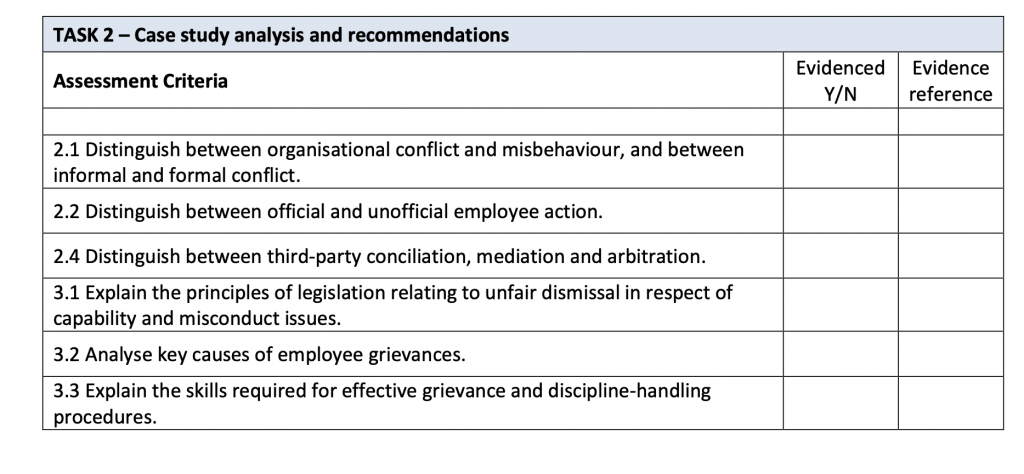5HR01 Assignment Example
- January 18, 2022
- Posted by: Assignment Help Gurus
- Category: CIPD CIPD EXAMPLES CIPD Level 5 HUMAN RESOURCE
5HR01 Employment Relationship Management

Preparation for the Tasks:
- At the start of your assignment, you are encouraged to plan your assessment work with your Assessor and where appropriate agree milestones so that they can help you monitor your progress.
- Refer to the indicative content in the unit to guide and support your assignment narrative and evidence.
- Pay attention to how your evidence is presented, remember you are a member of the People Practice team forthis task.
- Ensure that the evidence generated for this assessment remains your own work
You will also benefit from:
- Completing and acting on formative feedback from your Assessor.
- Reflecting on your own experiences of learning opportunities and continuing professional development. ▪ Reading the CIPD materials from their site and the related online material on these topics.
Task One: Training Presentation and Notes
You have been asked to prepare a training session that is to be given to people practitioners and department managers. This is to address issues in the company around poor employee relationships and to encourage and inform a more positive and proactive approach, to review and educate on good practice and make recommendations about the way forward.
The presentation needs to provide understanding of approaches that can be taken to support effective employee relationships. Your presentation needs to:
1.5 Explain the concept of better working lives and how this can be designed.
1.2 Differentiate between employee involvement and employee participation and how it builds relationships.
1.1 Review emerging developments to inform approaches to employee voice and engagement.
1.3 Assess a range of employee voice tools and approaches to drive employee engagement.1.4 Critically evaluate the interrelationships between employee voice and organisational performance.
2.3 Assess emerging trends in the types of conflict and industrial sanctions.
3.3 Explain the skills required for effective grievance and discipline-handling procedures.
3.4 Advise on the importance of handling grievances effectively.
4.1 Explain the main provisions of collective employment law.
4.3 Evaluate the purpose of collective bargaining and how it works.
4.2 Compare the types of employee bodies, union and non-union forms of employee representation.
It is essential that you refer to academic concepts, theories and professional practice for the tasks to ensure that your work is supported by analysis. It is essential that your slides are presented in a professional format and that your notes (either in notes view or in a WORD document) fully explain and support the detail of the knowledge and understanding required.
Please ensure that any references and sources drawn upon are acknowledged correctly and supported by in text citation and a bibliography. Your evidence must consist of:
- A slide show presentation
- Either notes in the presentation or a WORD Briefing paper (approximately 2900 words) refer toCIPD wordcount polic
TASK 2 – Case Study Analysis and Recommendations
For the training session, there will be two case studies presented for the group to work on and analyse. You need to prepare an analysis of these cases which are taken from past incidence in your organisation and design training guidance in a Word report on these cases. Your purpose is to ensure the management team learn lessons from these incidences and can understand your recommendations for a better approach.
Your training report needs to include the following analysis:
2.1 Distinguish between organisational conflict and misbehaviour, and between informal and formal conflict.
2.2 Distinguish between official and unofficial employee action.
2.4 Distinguish between third-party conciliation, mediation and arbitration.
3.1 Explain the principles of legislation relating to unfair dismissal in respect of capability and misconduct issues.
3.2 Analyse key causes of employee grievances.
CASE 1; This is a historical event which happened at time in the distant past at your organisation when a Union was recognised. A group of workers had their job roles significantly changed from working in a customer service team to working in sales. This group objected to the change in their roles; they cited the lack of notice and training that was provided and at the time, were given no opportunity for consultation. They did however form a staff committee and they did elect a staff representative to speak for them with the management team. There was one negotiation meeting which was not productive. They walked out of their jobs for 3 days and were threatened with dismissal, after which time they returned to work. Two of these workers raised grievances and most of these workers then left their jobs within the following 6 months period.
CASE 2; A worker in a team who has previously had a good and long term record with the organisation, became less productive and less communicative. The line manager tried to address this through an appraisal meeting which at the time was yearly event. The record of the discussion doesn’t show much detail except that the worker understood the issues and promised to improve their work. Subsequently, the worker has become disruptive at work, with some absenteeism, some arguments with team members and this is generally having a negative effects on others in the team as it has been going on for some 6 months. The line manager is unable to fully determine what the issues actually are and approach HR for advice.
It is essential that you refer to academic concepts, theories and professional practice for the tasks to ensure that your work is supported by analysis. It is essential that your work fully explains the detail of the knowledge and understanding required.
Please ensure that any references and sources drawn upon are acknowledged correctly and supported by in text citation and a bibliography. Your evidence must consist of:
Evidence
Use this as a checklist to make sure that you have included the required evidence to meet the task. Please enter the evidence title and where it can be referred to. An example has been provided for you.
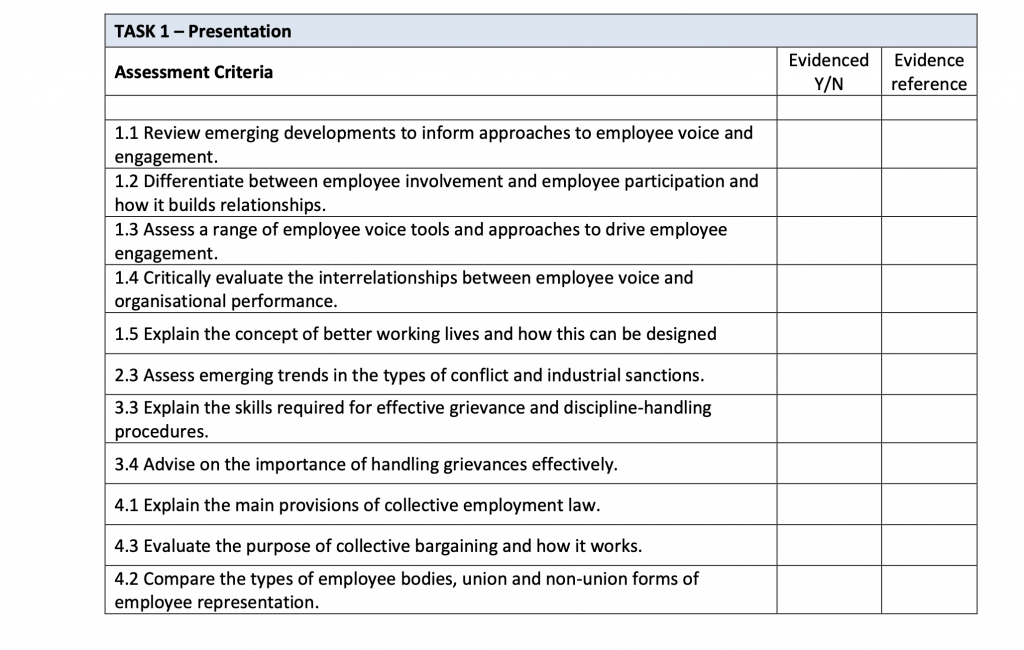
TASK 2 – Case study analysis and recommendations
SOLUTION: 5HR01 ASSIGNMENT ANSWERS
TASK 1 ANSWERS
Contents
AC 1.5 Explain the concept of better working lives and how this can be designed. 3
AC 1.1 Review emerging developments to inform approaches to employee voice and engagement. 5
AC 1.3 Assess a range of employee voice tools and approaches to drive employee engagement 6
AC 2.3 Assess emerging trends in the types of conflict and industrial sanctions. 7
AC 3.3 Explain the skills required for effective grievance and discipline-handling procedures. 8
AC 3.4 Advise on the importance of handling grievances effectively. 8
AC 4.1 Explain the main provisions of collective employment law. 9
AC 4.3 Evaluate the purpose of collective bargaining and how it works. 9
AC 1.5 Explain the concept of better working lives and how this can be designed.
The concept of better working life is multifaceted in nature and is related to other terms such as work life balance and quality working life. According to Sanfilippo (2020) work life balance refers to the state of equilibrium where employees are provided with an environment that prioritises both work and personal demands. Cipd denotes that a good work life comprises of several aspects including
- Work life balance
- Fair rewards and secure living
- Opportunity to develop and attain a sense of fulfilment
- Provision of employee voice and choice needed to shape their working lives
- Mentally and physically healthy
- Provides a supportive environment with constructive relationships
Similarly, Kotresh (2020) defines quality work life as a generic phrase that covers individual feelings on dimensions of work including economic rewards and benefits, working conditions, security, interpersonal and organisational relationships and its intrinsic meaning in an individual’s life.
There are several designs and models that have been proposed for organisations in the quest for designing better working lives for the employees who are he drivers of organisational success. For example, Parker and Jorritsma (20020) recommended the SMART model that recommends designing meaningful work and motivating work by focusing on five key elements that are Stimulating, Mastery, Agency, Relational and Tolerable demands hence the acronym SMART. There also integrative models and frameworks that are premised on designing good work conditions from different entry point such as “Thrive at Work” framework (Park & Jorritsma, 2020). The thrive at work framework is a holistic approach that focuses on employee getting well gain (Mitigating illness), helping employees stay well (Prevent Harm) and achieve their best potential (Promote Thriving. The model is expounded on fig 1
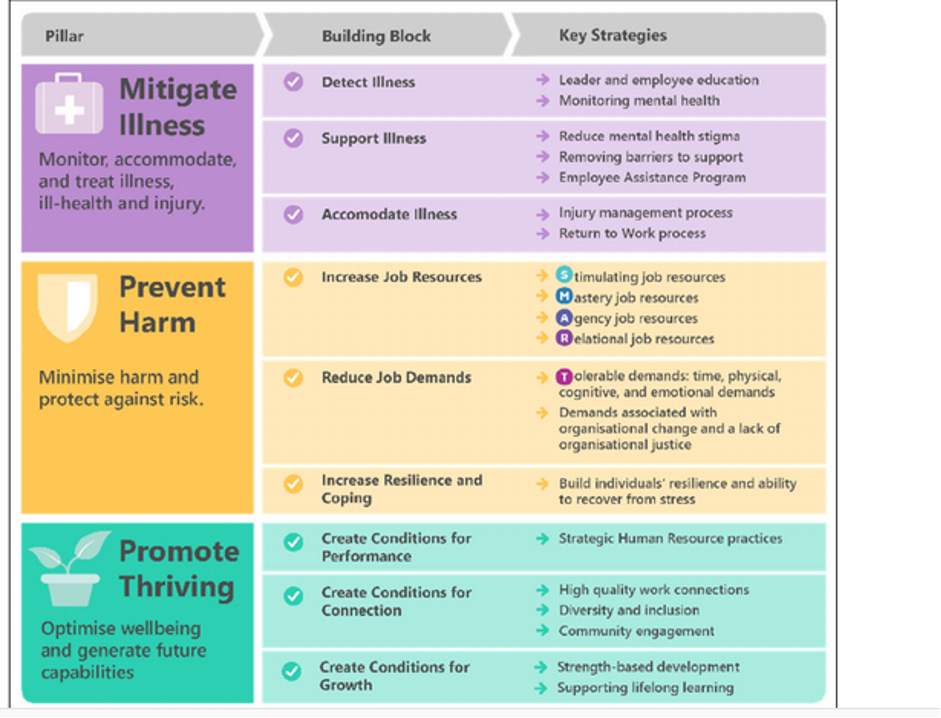
Source: (Parker & Jorritsma, 2020)
AC 1.2 Differentiate between employee involvement and employee participation and how it builds relationships.
Employee involvement refers to a kind of employer responsibility to provide the employees with the opportunity to get involved in organisational activities. It can also be defined as the direct interaction between the employees and the management which encourages the employees to take ownership of organisational projects (Quain, 2018). Examples of employee involvement activities include establishing organisational structures that spurs free thinking, providing employees with opportunities for new training, application of certain motivational methods to boost employee productivity as well as empowering employee to make significant work decisions without seeking approval from the management.
Employee participation on the other hand refers to the process of providing employees with the opportunity to participate in business decision-making as a way of empowering them while at the workplace. It is also refers to the business activities that employees take part in in order to achieve a common organisational goal (Quain, 2018). Employee participation requires that all employees irrespective of title to contribute to an identified project.
Differences
| Employee Participation | Employee Involvement |
| Employees take part in actual business activities | Employees add their input in the decision-making process |
| Fosters team approach as employees utilise their diverse skills to attain a common goal | Fosters effective communication between the management and the employees as it facilitates direct connection and communication between the two. |
| Employee ideas and attitudes are expected and appreciated by the management in the making of critical decisions. | It is a one to one approach between the employee and the management as tasks are assigned by the supervisors. |
Essentially, organisations should embrace both employee participation and employee involvement in order to enhance employee motivation and job satisfaction which results in enhanced organisational performance. The two should constantly be monitored in a bid to determine between participation and involvement which one brings optimal results to the company (Quain, 2018).
AC 1.1 Review emerging developments to inform approaches to employee voice and engagement.
According to Cipd (2021) employee voice refers to the ability of employees to express their opinions, views suggestions and concerns and thereby influence decision making at work. This facilitates a genuine two way communication between employees and the employer. Employee engagement on the other has multiple dimensions and is defined the way in which employees express themselves physically, emotionally and cognitively while executing their jobs (Gifford &Young, 2021). Across academic literature, employee engagement is conceptualised as a psychological state in which employees demonstrate vigour, dedication and absorption (Gifford & Young, 2021).
Budd, Gollan and Wilkson (2010) noted that there has been a sharp rise in interest of employee voice as policy makers, practitioners and academics in the recent past. Among employers this was precipitated by the failures denoted in the mass production era and the need to create high performance work practices. In addition the decline in union membership has created an avenue for exploring alterbative voice mechanisms for employees. Budd et al. (2010) assert that employee voice has been redefined from the exit-voice framework that tended to focus on reasons for dissatisfaction. This has led to manifestation of employee voice through four different ways including individual dissatisfaction that focuses on a specific issue with management, collective organisation that is a countering source of power to management e.g. in reference to trade union, management decision-making that focusses on productivity and efficiency management and mutuality of interest in reference to employer-employee relationship (Budd et al., 2010). Ultimately employee voice application at the workplace should be based on pragmatic, economic moral and ethical grounds.
Empirical evidence suggest that there exists a positive relationship between employee voice and engagement when open to input and action (Latif & Arif, 2018). As such, organisations need to enhance employee voice in order to strengthen engagement and bonding between employer and employees. McFeely (2021) discussed six trends impacting employee engagement in the business world including
- Leaders lack transparency and communication about organisational changes
- Trust in leadership has declined after the height of the pandemic
- Work life balance has been disrupted
- Organisations lack employee health and wellbeing support
- Employee recognition is declining
- Career growth opportunities have become less clear
AC 1.3 Assess a range of employee voice tools and approaches to drive employee engagement
There are several employee voice tools that are utilised by organisations and subsequently spur employee engagement. Surveys for example are used as strategic tools to measure and drive organisational change irrespective of whether it is done by the organisation, a consultant or by ban academic researcher. Surveys allow employee to air their voice with anonymity and confidentiality (Edmondson, 2006). They can also be used to draw employee opinions and attitude and thus a channel for employee voice. Therefore, surveys as a channel for employee voice allows organizations to engage in a safe, ethical and practical manner (Edmondson, 2006). For organisations to attain increased level of engagement, it is critical that the employee feedback is implemented. Nordmeyer (2019) outlines some of the benefits associated to surveys to include low cost, flexible format and smaller time commitment. The cons on the other hand include skewed results, incomplete data when done irregularly and meaningless when the feedback is not implemented.
Suggestion schemes is the oldest for of employee engagement tool. Sinclair (2019) argued that the old form of a suggestion box has eventually become a joke in the workplace as it is rarely utilised or taken seriously given the perception of a hands of management. However, with the rise of technology the suggestion scheme has been taken outside the box and can be utilised in form of innovative apps and software. When correctly implemented suggestion schemes increase employee engagement and loyalty when they feel that their suggestions are valued and are acted upon. The benefits of suggestion schemes include helping to ring forward talented employees for the greater good of the company besides help to improve the employer and employee relations. On the other hand suggestion schemes may arouse feelings of hurt and insubordination among the superiors and are limiting in that employee do not get an oppo9rrtunity to expound on their suggestion orally.
Another tool that can be utilised is the employee forums that refers to a platform that give employee the opportunity to raise employment issues that affect them. Cipd (2021) articulates that one the approaches to employee voice is through employee forums that involves groups of non-union or mixed groups of non-union and union employee gathering in a meeting with the management for purposes of information sharing and consultation. The benefits of employee forums is that they create an environment where questions can be answered openly and freely, heightens employee engagements which results in improved performance and boosts employee morale as they feel valued and appreciated. The cons are time consuming and expensive to organise.
AC 1.4 Critically evaluate the interrelationships between employee voice and organisational performance.
Employee voice in an organisation can occur directly between the employees and the management or indirectly through worker representatives and the management (Kim, MacDuffie and Pil, 2010). Empirical literature on the relationship between type of employee voice and organisational performance denotes mixed results. In reference to direct employee voice extensive survey research has found a positive and often statistically insignificant impact to organisational performance but never a negative effect (Kim et al., 2010). In addition, research studies indicate that direct employee voice is more in heightening employee satisfaction and performance when employees have influence on decision-making, focused on work related issues and when participation programs are direct. Consequently, indirect employee voice link to performance is different for different countries. For example in US, research indicates that unionisation effect on productivity was small but mostly positive while in Britain unionisation resulted in diminished productivity in the 1980s (Kim et al., 2010)
Cipd (2021) asserts that research has demonstrated that effective employee voice approaches results in positive outcomes for employees at an individual level and organisations. Employers can maximise on employee voice to raise innovation and productivity as well as reduce absenteeism and workplace conflict.
Trickel (2021) outline some of the arguments that are utilised in questioning whether employee voice impacts on organisational performance. For example there are concerns that employee voice blurs the line between management and employee hierarchy. This results in creation of barriers in reporting line that hinder open communication and negatively impacts on organisational performance. Additionally, employee voice can be meaningless if there is no action taken on feedback provided.
AC 2.3 Assess emerging trends in the types of conflict and industrial sanctions.
There has been significant changes in the nature of conflict and industrial actions in the 21sts century. Conflicts and industrial action tend to be relatively shorter when compared to the 19th century when it took much more time to resolve. Conflict at the workplace is still prevalent but employees tend to be protesting in other ways such as sabotage or mischief, absenteeism and minor acts of defiance (Hughes &Dundon, 2018). Reference made to the Centre for Economics and Business consultancy denote that since 20111 the rates of absenteeism has been rising steadily.
Other modern forms of conflict and resistance include social media campaigns over the unjustified zero-hour conflicts, lunchtime protests as staged in Bentley cars, employee sit-ins as was the case at Hinckley Point power station workers as well solidarity for instance when students join striking lecturers (Hughes&Dundon, 2018).
Consequently, the formal industrial actions spearheaded by trade unions has reduced as more workers are opting out of trading unions and preferring direct representation between employer and employee. While organisations and trade unions seem to have found a way of working together cordially when compared to the yester years. For example in 1979, 3 million strikes were recorded in January 2018 there 9000 working days lost attributed to strikes (Hughes & Dundon, 2018).
AC 3.3 Explain the skills required for effective grievance and discipline-handling procedures.
Grievance and discipline handling procedures are intended to handle difficulties that may arise when difficulties emerge in an employment relationship. They are also intended to ensure that the process is consistent and fair to all parties and thus the need to follow individual organisational procedures as well as the Acas Code of Practice (Cipd, 2021). Some of the skills required in this process include
Investigative skills- the process is essentially a fact finding mission that collates all the relevant information pertaining to the grievance or disciplinary hearing (Consult HR, 2018). To this end, the personnel involved should possess the ability to gather data, reveal significant facts and generate conclusions that will help in the proceedings.
Active Listening is also an important skill in grievance and disciplinary hearing. It refers to the ability to concentrate on what is being said as well as hearing what the speaker is trying to convey. The goal of active listening is acquire information through listening to understand people within the context of the situation without being judgemental (Penney, 2019).
Questioning skills – refers to the ability to ask relevant questions in a bid to obtain information, get clarity on a matter, to explore the scope of the grievance as well as understand more about the parties perspectives towards the process (Bhasin, 2021). Questioning skills are essential in resolving the problem and also help in decision making process.
Being objective is also essential in grievance and discipline handling. It necessitates that the proceedings only deal with what is factual and thus desist from individual prejudices and interpretations. To this end, every action should be backed up by the reasons that or the information that was considering in arriving at a decision.
AC 3.4 Advise on the importance of handling grievances effectively.
The benefits that are associated to effectively handling a grievance is accrued to both employees and employers. Chand (2014) outlined the following benefits
- It encourages the employees to raise their concerns devoid of fear of retaliation which in turn enhances the employment relationship
- It leads to the provision of a fair and speedy avenue of dealing with complains and conflicts at the workplace.
- It diminishes the likelihood of a minor disagreement precipitating into a serious disputes that damages the employment relationship.
- It serves as a healthy outlet for employee discontentment and frustrations while at the workplace.
- It saves the employer time and money as the solutions to workplace problems are easily sought internally as there is no need to find an external mediator.
- It helps to develop an organisational environment that is hinged on trust and openness
Similarly, Demos HR (2019) that an effective grievance process should give both employees and the employer an objective and fair system to review and raise complains devoid of bias. Employees that feel that their concerns are taken seriously and dealt with fairly are more motivated and maintain high levels of productivity (Demos Hr, 2019). Consequently, a structure grievance process helps the employer to identify any unlawful gaps and unacceptable gaps in the handling of grievances. Filling of such gaps, helps the employer to bolster the company brand and image and thus avoid hefty legal fines that can also attract bad press (Demos HR, 2019).
AC 4.1 Explain the main provisions of collective employment law.
Collective employment law is the branch of employment law hat focuses on the behaviour and activities of the work councils, trade unions and employers associations and the interaction between the two in the industry. Some of the provisions comprised in the collective employment law in the UK is the statutory recognition procedures. It details how a trade union should apply to be recognised by the Central Arbitration Committee such that it has the ability to conduct collective bargaining in reference to hours, pay and holidays on behalf of employees employed by an identified employer. The basic principle of being granted recognition is when a majority of the employees in the bargaining unit are in agreement. The application may be rejected when the employer has less than 21 employees
Another provision for collective employment law is official and unofficial industrial action. Official industrial action is when workers who are also members of an authorised trade union participate in strike action for example (Qureshi, 2018). Workers who are not part of a trade union can take part in an official and authorised industrial action organised by a union. Unofficial industrial action on the other hand happens when employees take part in an action that has not been authorised by a union (Qureshi, 2018).
When collective agreements are reached between an employer and a trade union such an agreement may cover specified terms and conditions of work such as hiring, suspension and firing, discipline, union membership and allocation of work among other aspects. Nonetheless, the agreement can only be legally binding when stated in writing and have the binding consequences outlines in the employment contract. The statutory consequences are dependent on the collective agreement as espoused in writing (Reuters, 2022).
AC 4.3 Evaluate the purpose of collective bargaining and how it works.
Collective bargaining power is traced to Sydney and Beatrice Webb in the celebrated treatise ‘History of Trade Unions’. It refers to a group action through representation and negotiation and involves proposals and counter proposals between the employer and the employees through the trade union.
The chief purpose collective bargaining is to advance mutual understanding between the employer and the employees (Vaibhav, 2018). In view of this the purpose of collective bargaining may be evaluated from a management perspective which is to get work done and earn high profits while paying the least minimum cost to employees. From the trade union perspective the purpose of collective bargaining power is to prevent unilateral action from the employers on aspects affecting employees such as wages and hours of work (Vaibhav, 2018) . Essentially collective bargaining power helps labour union to promote economic and non-economic interests of the employees.
There are three major steps in the process of collective bargaining that are creation of a trade agreement that involves the negotiating process on aspects such as nature of employment contract and wages. The second step is interpretation that expounds on the day to day application of the contract provisions as agreed on the negotiating process. The third step is the enforcement of the agreement that involves ensuring that the provisions of the agreement are adhered to. It also ensures that day to day problems are resolved as per the precedents set at previous collective agreements given that it is a continuous process (Vaibhav, 2018)
AC 4.2 Compare the types of employee bodies, union and non-union forms of employee representations
There are two major forms of employee representation union and non-union representation. Unions are the most common way of employee representation. A union can be defined as an organisation that comprises a group of workers who collectively put up their demands and bargain for an ideal employment contract with the employer.
Non-union representation on the other hand is whether employers and employees directly negotiate for a beneficial solutions to the problems encountered in the employment relationship. Non-union representation is common in the private sector and preferred by workers that have a high sense of individual freedom and autonomy
| Parameters of Comparison | Union | Non Union |
| Power | The power is vested in the unions as they collectively represent the employees. Due to the aspect of numbers they are able to demand for beneficial contracts for their members | The power is vested with the employers as they to a large extent decide on the working conditions and are ultimately able to influence and exert that which works for the company |
| Fair Wages | Trade unions are better positioned to negotiate for fair wages for the members | Non-unionised workers are at a disadvantage in access to fair wages as the employers have an upper hand |
| Job security | Trade union members have a job security as the union is able to collectively bargain security of their members unless in the vent of gross misconduct. | Employees that do not belong to a union have the unending fear of being laid off or dismissed as the employer has more say on the employment contract. |
| Autonomy | Employees belonging to a union lose individual autonomy and thus have to abide by the decisions made by the union with the employer. | Employee enjoy individual autonomy as long as it abodes to the code of the conduct of the organisation. Employees thus do not have to worry about other employees perspectives. |
Adapted from (https://askanydifference.com)
Bibliography
askanydifference.com. (n.d.). Difference Between Union and Non Union (With Table) – Ask Any Difference. [online] Available at: https://askanydifference.com/difference-between-union-and-non-union/.
Bhasin, H. (2021). What are Questioning Skills and Various Techniques for it? [online] Marketing91. Available at: https://www.marketing91.com/questioning-skills/ [Accessed 28 Mar. 2022].
Budd, J.W., Gollan, P.J. and Wilkinson, A. (2010). New approaches to employee voice and participation in organizations. Human Relations, [online] 63(3), pp.303–310. Available at: https://research-repository.griffith.edu.au/bitstream/handle/10072/36031/66053_1.pdf.
Chand, S. (2014). Objectives and Benefits of Grievance Handling Procedure. [online] Your Article Library. Available at: https://www.yourarticlelibrary.com/human-resource-development/objectives-and-benefits-of-grievance-handling-procedure/32377.
CIPD (2021). Good Work Index | Survey reports. [online] CIPD. Available at: https://www.cipd.co.uk/knowledge/work/trends/goodwork#gref.
Cleverway (2010). Workplace Representation / United Kingdom / Countries / National Industrial Relations / Home – WORKER PARTICIPATION.eu. [online] Worker-participation.eu. Available at: https://www.worker-participation.eu/National-Industrial-Relations/Countries/United-Kingdom/Workplace-Representation.
Consult HR (2018). 10 top tips for effectively managing discipline and grievances in the workplace. [online] Consult HR. Available at: https://www.consulthr.co.uk/10-top-tips-effectively-managing-discipline-grievances-workplace/.
Demos HR (2019). The Importance of a Structured Grievance Process – Blog rolls – Dêmos HR Solutions. [online] demoshr.co.uk. Available at: https://demoshr.co.uk/blog/blog/item/the-importance-of-a-structured-grievance-process.
Edmondson, V. (2006). Organizational Surveys: A System for Employee Voice. Journal of Applied Communication Research, 34(4), pp.307–310.
Gifford, J. and Young, J. (2021). Employee Engagement & Motivation | Factsheets. [online] CIPD. Available at: https://www.cipd.co.uk/knowledge/fundamentals/relations/engagement/factsheet#gref.
GOV.UK. (n.d.). Statutory Recognition – Guide for the Parties on Parts IV and V of Schedule A1. [online] Available at: https://www.gov.uk/guidance/statutory-recognition-guide-for-the-parties-on-parts-iv-and-v-of-schedule-a1.
Hughes, E.S. and Dundon, T. (2018). New styles of strikes and protest are emerging in the UK. [online] The Conversation. Available at: https://theconversation.com/new-styles-of-strikes-and-protest-are-emerging-in-the-uk-94528.
Kim, J., MacDuffie, J.P. and Pil, F.K. (2010). Employee voice and organizational performance: Team versus representative influence. Human Relations, 63(3), pp.371–394.
Kotresh, P. (2020). Quality of Work Life: Definition, Objectives, Factors, Models, Elements, Steps. [online] Economics Discussion. Available at: https://www.economicsdiscussion.net/human-resource-management/quality-of-work-life/quality-of-work-life/32426.
Latif, N.Z.A. and Arif, L.S.M. (2018). Employee Engagement and Employee Voice. International Journal of Academic Research in Progressive Education and Development, 7(3).
McFeely, S. (2021). The Top 6 Employee Engagement Trends in 2021. [online] www.quantumworkplace.com. Available at: https://www.quantumworkplace.com/future-of-work/employee-engagement-trends.
Nordmeyer, B. (2019). The Advantages & Disadvantages of a Self-Completion Questionnaire. [online] Bizfluent. Available at: https://bizfluent.com/info-8175428-advantages-disadvantages-selfcompletion-questionnaire.html.
Parker, S.K. and Jorritsma, K. (2020). Good work design for all: Multiple pathways to making a difference. European Journal of Work and Organizational Psychology, 30(1), pp.1–13.
Penney, J.C. (2019). The Importance Of Active Listening In The Workplace. [online] Vantage Circle HR Blog. Available at: https://blog.vantagecircle.com/active-listening/.
Quain, S. (2018). The Difference Between Employee Participation & Employee Involvement. [online] Chron.com. Available at: https://smallbusiness.chron.com/difference-between-employee-participation-employee-involvement-13013.html.
Qureshi, S. (2018). What Do Employers Need to Know about strikes? [online] People Management. Available at: https://www.peoplemanagement.co.uk/experts/legal/employers-need-to-know-strikes#gref.
Reuters, T. (2022). Collective agreement. [online] Practical Law. Available at: https://uk.practicallaw.thomsonreuters.com/9-107-5938?transitionType=Default&contextData=(sc.Default)&firstPage=true.
Sanfilippo, M. (2020). How to Improve Your Work-Life Balance. [online] Business News Daily. Available at: https://www.businessnewsdaily.com/5244-improve-work-life-balance-today.html.
Sinclair, S. (2019). This is why you need to update your suggestion scheme. [online] www.talkfreely.com. Available at: https://www.talkfreely.com/blog/21stc-suggestion-scheme.
Trickle (2021). How to Leverage Employee Voice | Trickle. [online] Trickle | Real-time Employee Engagement & Wellbeing Platform. Available at: https://trickle.works/blog/how-to-leverage-employee-voice/.
Vaibhav, V. (2018). Collective Bargaining: Definition, Types, Features and Importance. [online] Economics Discussion. Available at: https://www.economicsdiscussion.net/collective-bargaining/collective-bargaining-definition-types-features-and-importance/31375.
5HR01 slide show presentation

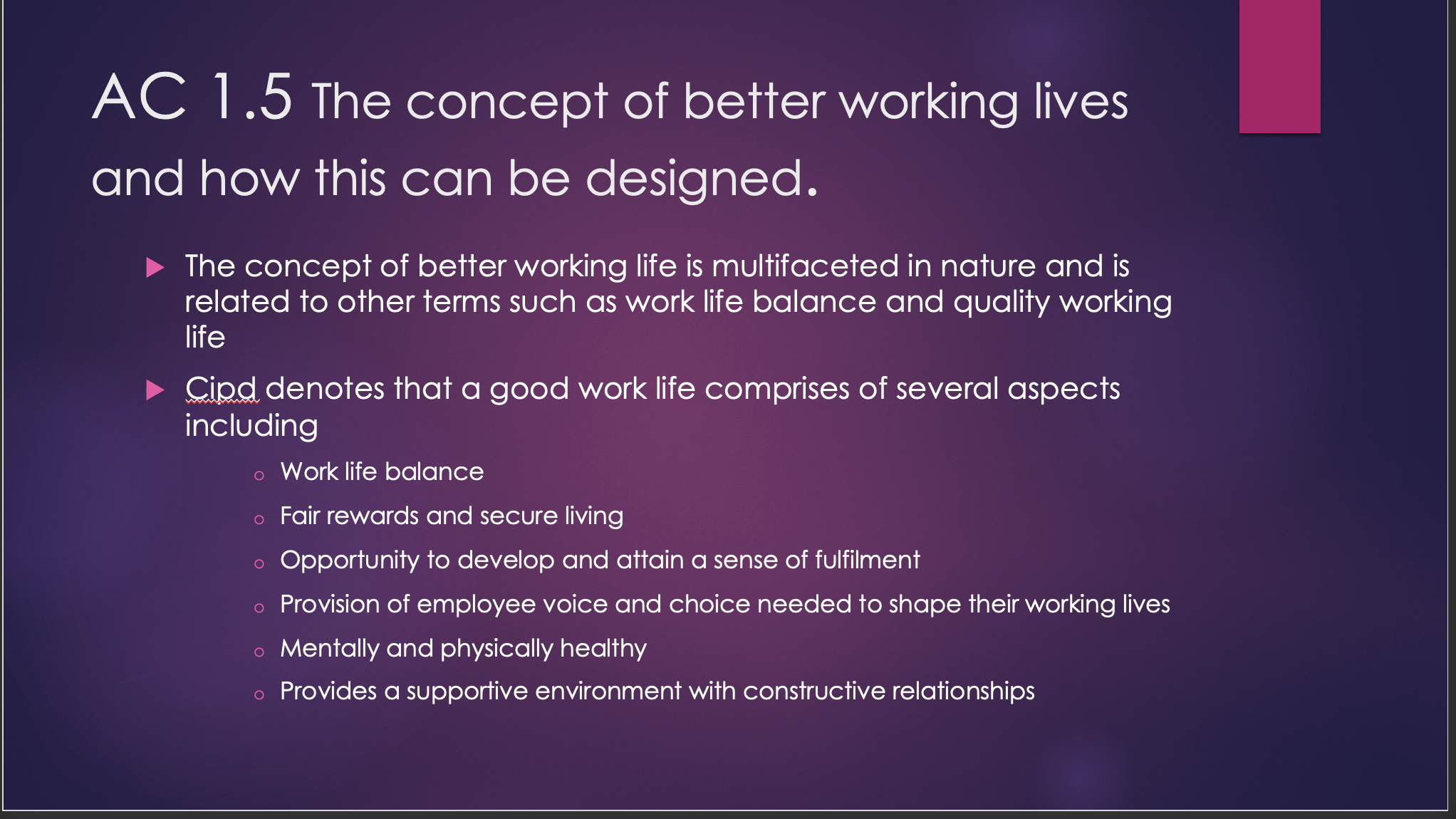


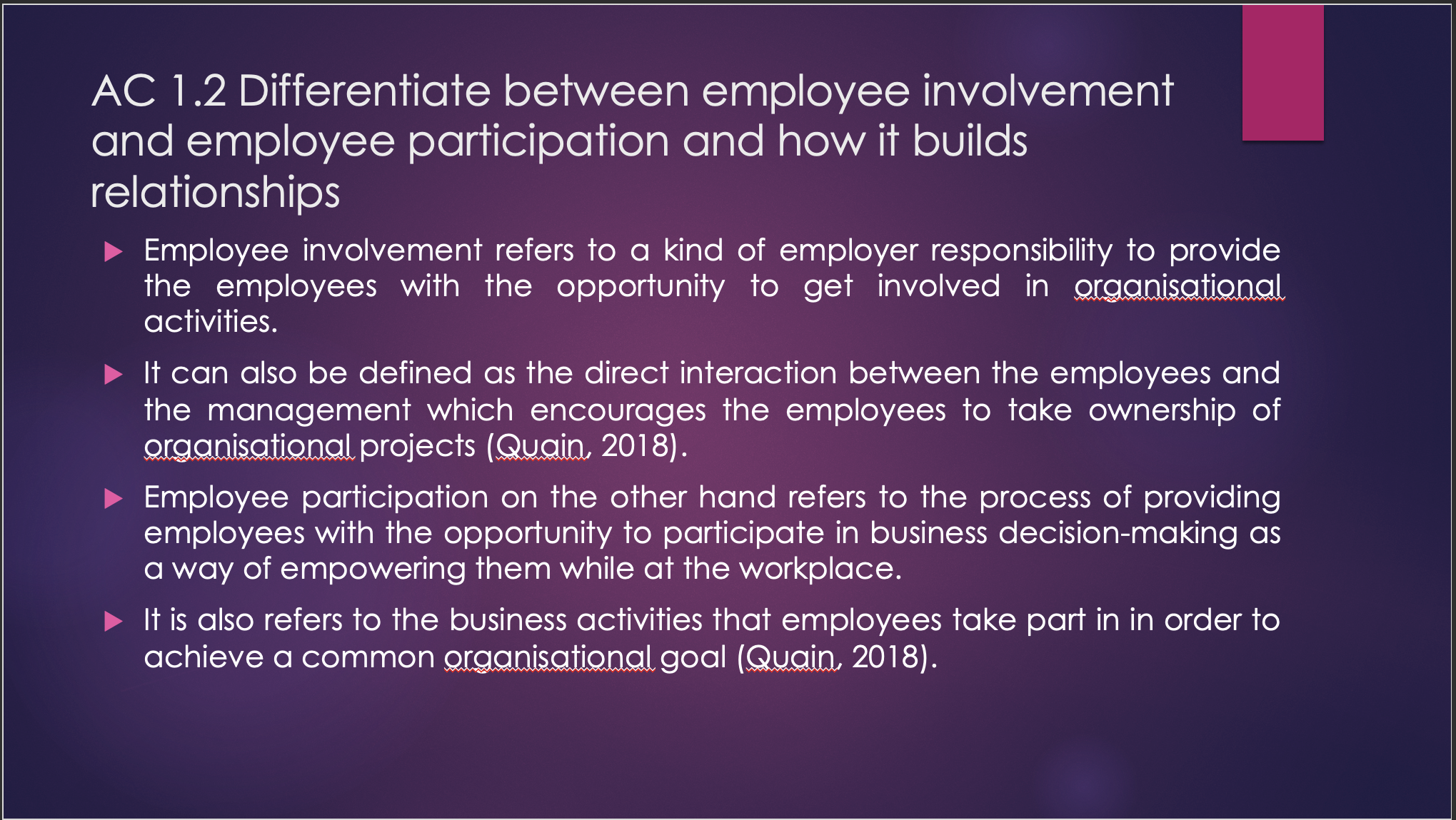
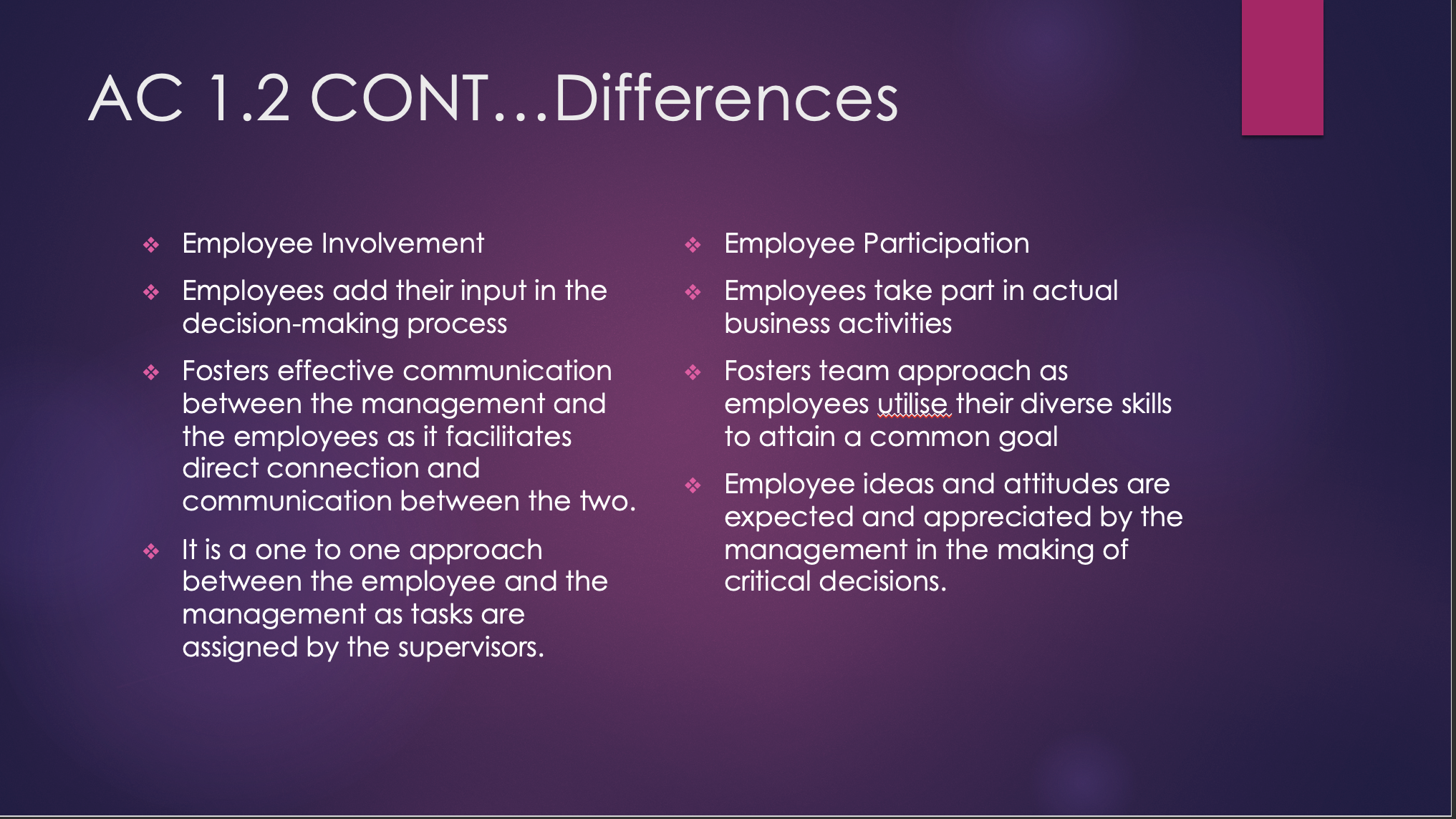


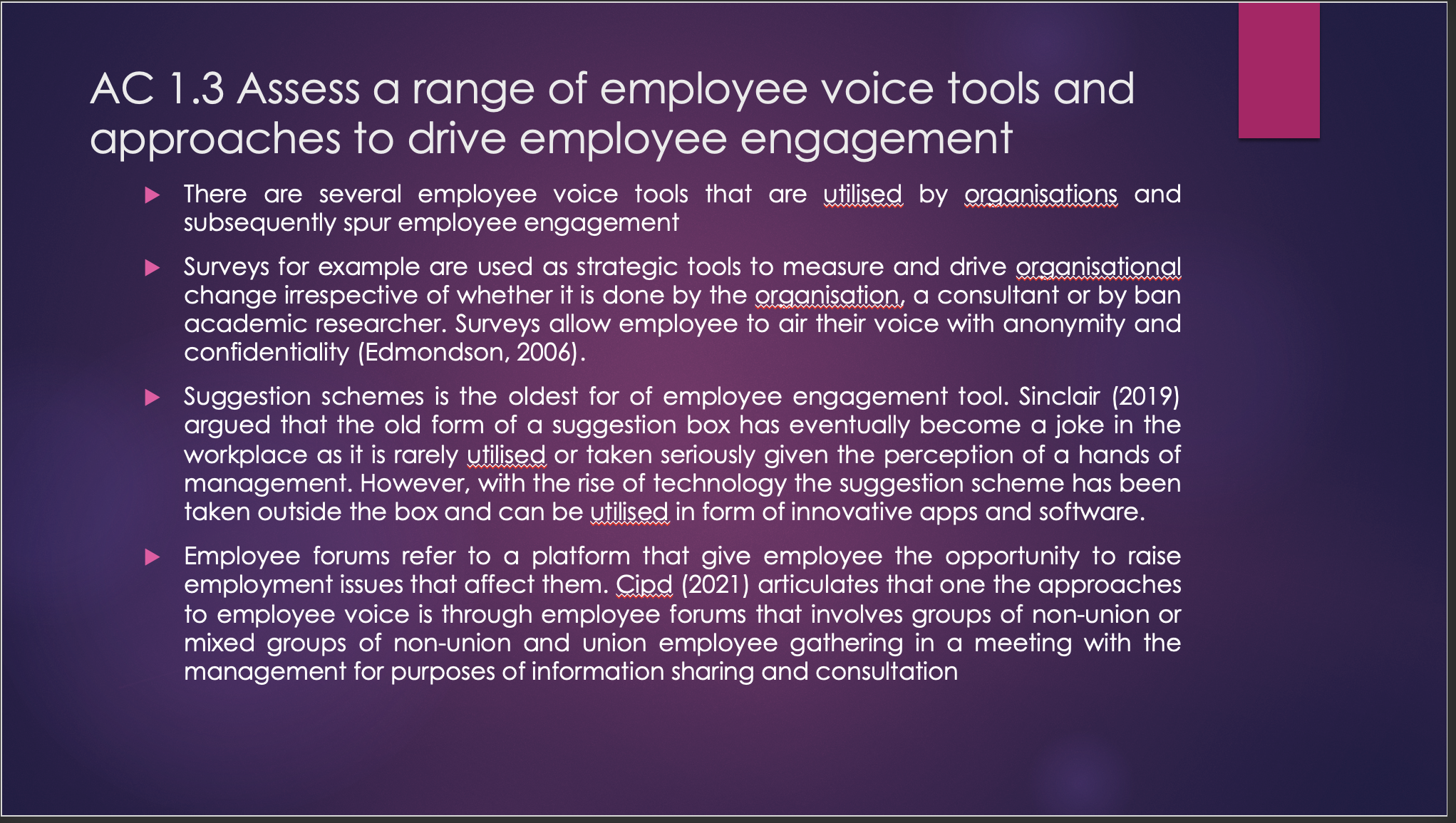
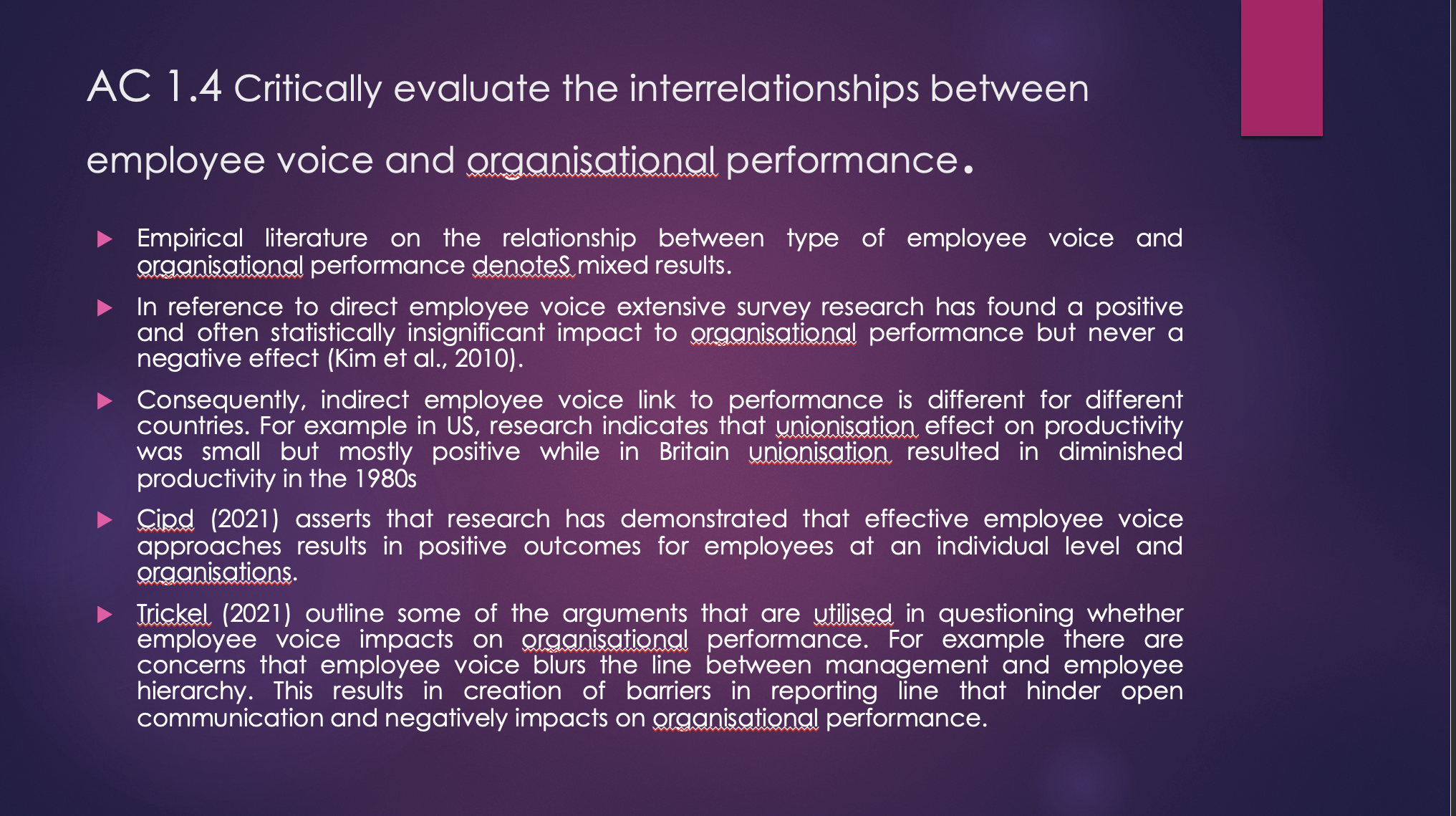
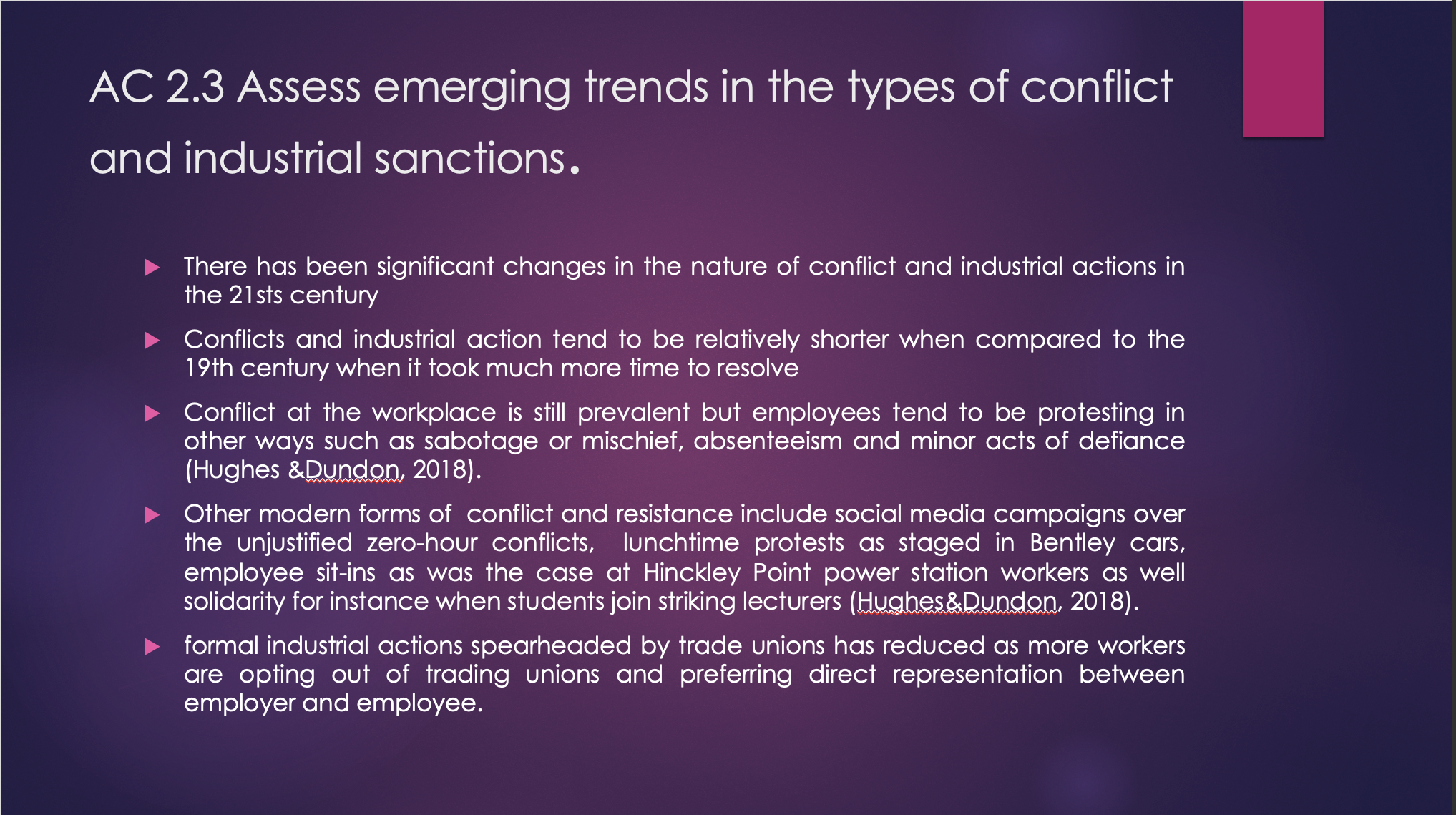
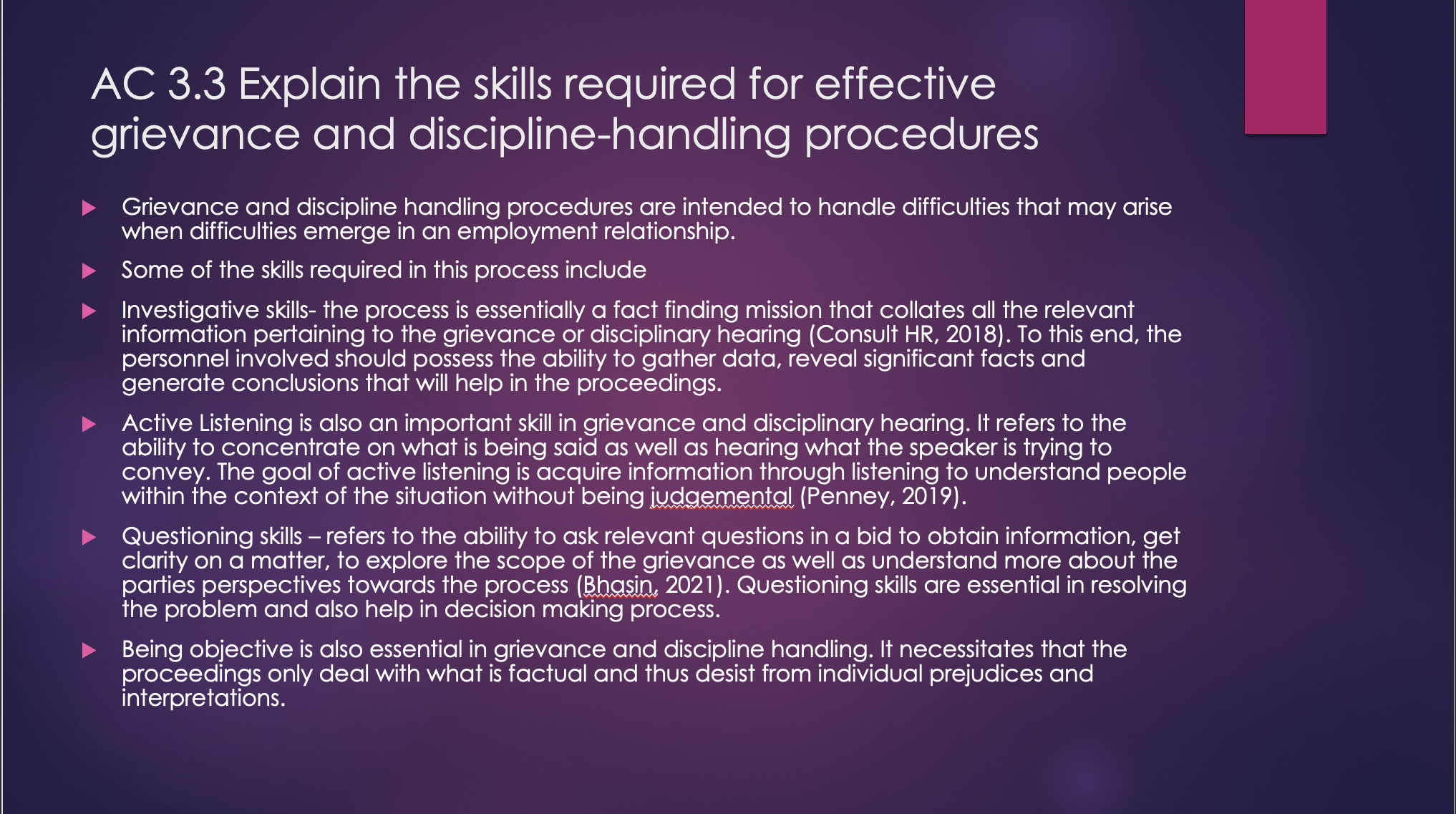

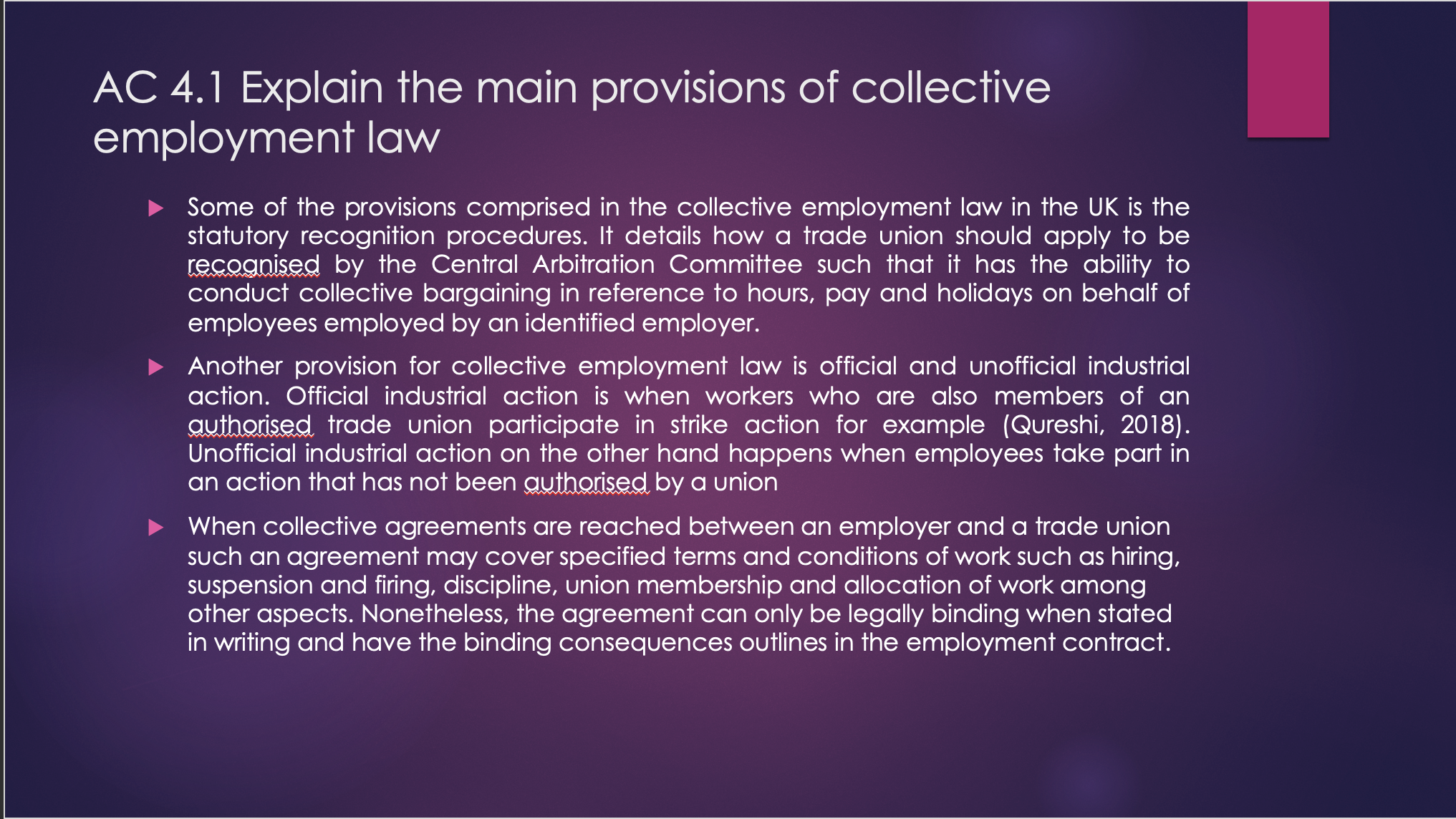
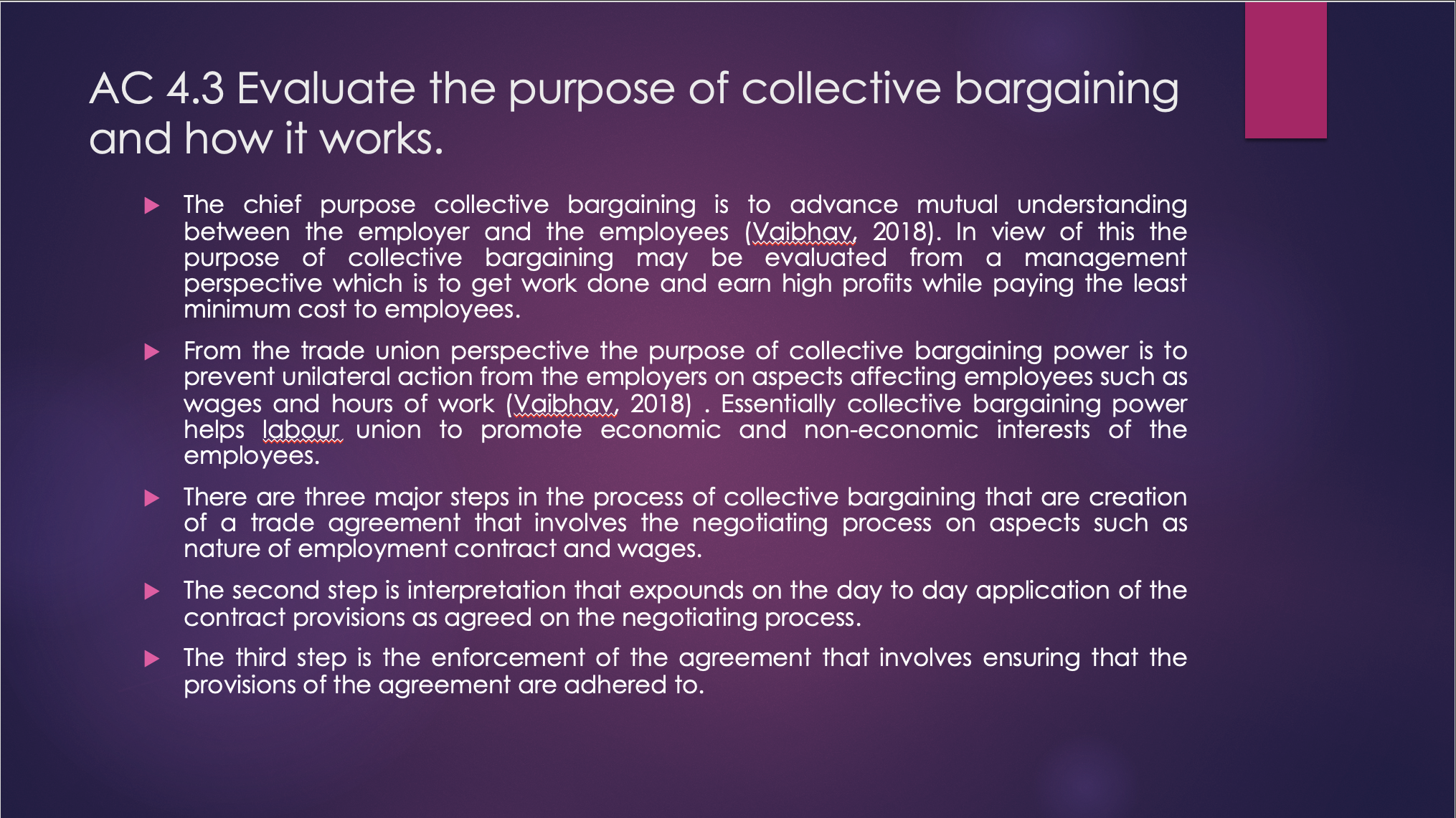
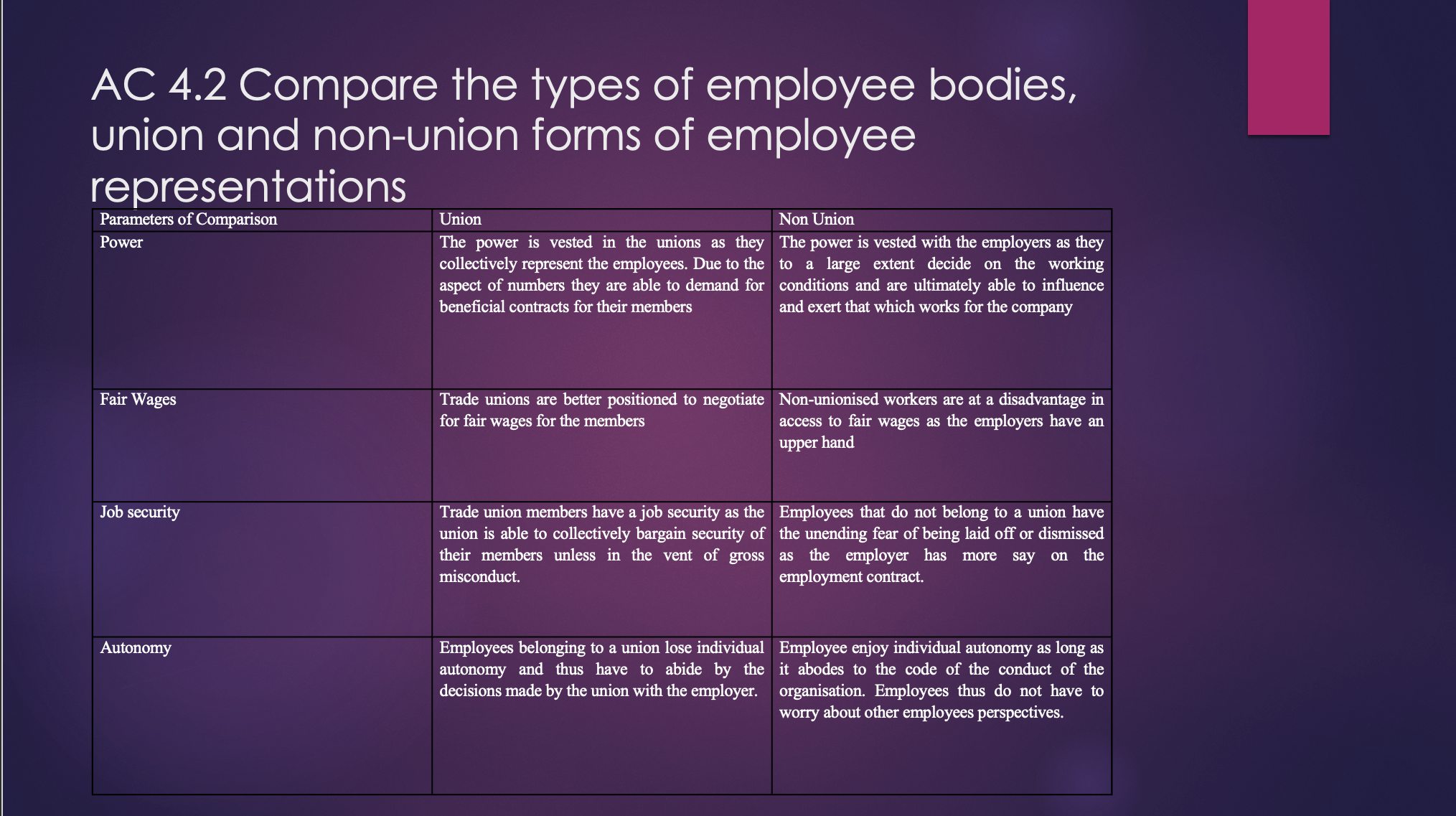
SOLUTION:TASK 2
Case Study Analysis and Recommendations
AC 2.1 Distinguish between organisational conflict and misbehaviour, and between informal and formal conflict.
Conflicts in organisations is inevitable as they comprise of different people working together but are beholders of different values, beliefs, attitudes, perspectives and work ethics. Organisational conflict thus arise from differing opinions and ideas which can then inhibit decision making in a workplace. According Shila (2019) organisational conflict can be defined as situations that break down decision making due to incompatible or irrational stands taken by individuals that are part of the decision making system. Conflict in this regard is understood as the objective incompatibility between goals and values. Organised conflict at the workplace can be manifested in form of strikes, go-slow protests and deliberate negative disruptions.
Organisational misbehaviour on the other hand is an act of defiance to organisational principles. Yew and Gregory (2011) defined organisational misbehaviour as actions that are unacceptable to organisational management as they are disruptive to the functioning of a company. Organisational misbehaviour is usually voluntary and intentional designed to cause harm to a person, organisation or work group (Yew &Gregory, 2011). Misbehaviour can be manifested in form of absenteeism, sabotage, fraud and walking out.
Formal and informal conflict within an organisation takes a structural approach to conflict. Formal organisations are structured to achieve specified organisational goals and objectives and are therefore subject to official rules and regulations (Shila, 2019). Conflict in this respect occurs when there is incompatibility in leadership styles. Formal conflicts is prevalent in organisations that encourage differences in ideas and thus spark debate among employees cognizant of the fact that conflict can be positive or when negative when ill managed. Consequently, informal conflict is generated when satisfying individual social needs among the employees (Shila, 2019). In this regard informal conflict can occur when there is incompatibility of the social needs of an employee and the organisational needs for example in reference to culture when a Muslim employee views Friday as Sabbath while the organisation requires him or her to attend work responsibilities on the material day.
AC 2.2 Distinguish between official and unofficial employee action.
Official industrial action refers to a context when employees who are members of a trade participate in a sanctioned action by the union (Qureshi, 2018). Official employee action are protected by law and area characterised by having a trade dispute between the employees and the employer, engaging in a secret ballot where the majority support an industrial action and provides a detailed notice to the employer informing the employer about its intentions at least seven days prior to its commencement (www.nidirect.gov.uk, 2015). Employers cannot dismiss any employee who participates in an official action.
Unofficial employee action refers to an action that has not been sanctioned by a recognised trade union (Qureshi, 2018). Un official employee action in not protected by law and is characterised by aspects such as action called by a trade union but lacks support of a secret ballot, action supporting individuals dismissed for undertaking unofficial action, secondary industrial action supporting employee of a different employer and action promoting ‘union only’ practices(www.nidirect.gov.uk, 2015). Employers have the prerogative of dismissing employees who participate in unofficial employee action.
AC 2.4 Distinguish between third-party conciliation, mediation and arbitration.
Disputes between an employee and an employer can be resolved with the help of a third party also referred to as Alternative Dispute Resolution (ADR). Murray (2021) defines alternative dispute resolution as the different processes that are available to individuals and organisations in settling of a dispute devoid of litigation or going to the courts. According to Gov.uk (2012) there are three main ways of an employee and employer to resolve a dispute including mediation, conciliation and arbitration.
Conciliation is common in employment disputes and refers to a compulsory process that is undertaken prior to an employee bringing claim to the Employment Tribunal (Murray, 2021). Conciliation is voluntary and thus both the employer and employee must consent too it and within the UK context Acas can offer a free service in the setting of a potential claim. In addition Acas provides a guideline on conciliation procedures (Gov.uk, 2012). A conciliator attempts to help the parties reach agreement through provision of a personal opinion upon evaluating the matter at hand. Some of the pros of the conciliation method is that it is private, cost effective and involves a conciliator who is an expert. Nonetheless it is not legally binding.
Mediation occurs when an independent and impartial third party is involved in resolving a dispute between the employer and the employee. It is often utilised when informal discussion fail to bear fruits. Mediation is voluntary and as such neither of the parties can participate under duress (Gov.uk, 2012). The mediator attempts to help the parties reach an agreement but does not offer personal assessment or opinions on the matter which is in contrast to conciliation. Similar to conciliation it not legally binding. Some of the benefits tied to mediation is less expensive, allows privacy, parties jointly choose mediator, neutral third party has the potential to reach a fair agreement and demonstrates willingness to negotiate (Murray, 2021).
Arbitration is legally binding and involves a third party making a firm decision on cased upon evaluation of both sides of the parties involved. The employer and the employee have to agree that the decision of the arbitrator will be legally binding but still has a chance to take the case to an employment tribunal (Gov.uk, 2012). The arbitrator has to be an expert in the field and does not necessarily have to be one person it can be a panel of arbitrators presided by a chairman. The pros of arbitration include it is legally binding, faster and cheaper than litigation, confidential and both parties joint choose and arbitrator (Murray, 2021).
AC 3.1 Explain the principles of legislation relating to unfair dismissal in respect of capability and misconduct issues.
According to Cipd (2021) the central basis of unfair dismissal is that employees have to be treated fairly as they have a statutory right of not being unfairly dismissed. Collins Ewing and McColgan (2012) expound that the law of unfair dismissal demonstrates the power of the law when it comes to misuse of managerial contractual and discretionary powers in the disciplining of employees. It also serves as a vehicle for employees to assert their labour right devoid of interference from the employer.
Capability dismissal refers to termination of an employment contract on the basis of poor performance or inability to meet the expected standards (Morris, 2019). However, capability dismissal is only protected by law if a fair process is followed and takes into consideration the minimum standards set by ACAS. Consequently, failure to adhere to a fair and correct procedure in capability dismissal can result in unfair dismissal claims in the employment tribunal. The exiting cap for unfair dismissal awards is £98,922 (Morris, 2019).
According DP employment law (2021) misconduct is one of the recognised reasons that employers can base a termination of an employment contract. Examples of gross misconduct include and are not limited to the following alcohol abuse at work, physical assault, theft, gross negligence and serious breach of health and safety standards. However, employers are required to follow a fair and reasonable investigation into the misconduct otherwise it warrants to be classified as unfair dismissal (DP Employment law, 2021).
AC 3.2 Analyse key causes of employee grievances.
Grievance can be defined as that which causes an employee to feel or think that he or she has been wronged (Soumita, 2019). Employee grievance refers to a concern problem or complain that is raised by an employee on account of their work, workplace or colleague including the management. Employee grievance arises when one feels dissatisfied and subsequently beliefs that it is as a result on an unjust or unfair reason (Bright HR, 20210).
The following are some of the major causes of employee grievance
- Salaries and wages- arises when employees are underpaid, experience salary delays, unfair deduction, insufficiently compensated for overtime or failure to review their salaries after working for a long period at the company.
- Unfair practices- it can be manifested through forced transfers, unfair promotion of staff, unsuitable job designs and lack of sufficient training. The impact of this is heightened employee turnover and absenteeism.
- Favouritism- it occurs when some employees enjoy undue advantage from managers due to attached personal relationships. Favouritism may also occur due to nepotism and negatively affects performance and employee morale.
- Work overload- grievance may arise due to forceful assignment of additional responsibilities that heightens employee burdens at the workplace and inevitably denies them flexibility. This may potentially affect their physical and mental health and negatively affect their job satisfaction and performance.
Adapted from (Soumita, 2019).
Bibliography
BRIGHT hr (2010). Examples of Grievances in the Workplace | BrightHR. [online] BrightHR. Available at: https://www.brighthr.com/articles/employee-conduct/grievances/types-of-grievances-in-the-workplace/.
Collins, H., Ewing, K. and McColgan, A. (2012). Unfair dismissal. Labour Law, pp.800–856.
DP Employment Law. (2021). Unfair Dismissal & Misconduct | Employee – DP Employment Law. [online] Available at: https://dpemploymentlaw.co.uk/unfair-dismissal-and-misconduct-employee/.
Gov.uk (2012). Solve a workplace dispute. [online] GOV.UK. Available at: https://www.gov.uk/solve-workplace-dispute/mediation-conciliation-and-arbitration.
Morris, A. (2019). Capability Dismissal: Employer Guidance | DavidsonMorris. [online] Available at: https://www.davidsonmorris.com/capability-dismissal/.
Murray, P. (2021). What Are The Four Types Of Alternative Dispute Resolution (ADR)? [online] Britton & Time Solicitors. Available at: https://brittontime.com/2021/02/05/what-are-the-four-types-of-alternative-dispute-resolution-adr/.
Shila, R. (2019). Organizational Conflict: Meaning, Types, Stages, Levels, Factors & Causes. [online] Your Article Library. Available at: https://www.yourarticlelibrary.com/organization/conflict-management/organizational-conflict/99695.
Soumita, B. (2019). Causes of Employee Grievance. [online] Essays, Research Papers and Articles on Business Management. Available at: https://www.businessmanagementideas.com/employee-grievance/causes-of-employee-grievance/20564.
www.nidirect.gov.uk. (2015). Industrial action | nidirect. [online] Available at: https://www.nidirect.gov.uk/articles/industrial-action#toc-0.
Yew, L.T. and Gregory, G. (2011). Organisational misbehaviour: Should management intervene? [online] Borneo Post Online. Available at: https://www.theborneopost.com/2011/07/26/organisational-misbehaviour-should-management-intervene/.
Order your copy of 5HR01 Assignment Answers from Us today. You can Visit Cipd assignment Help to get all answers regarding Cipd from our Experts.
[vc_row full_width=”” parallax=”” parallax_image=””][vc_column width=”1/1″][vc_widget_sidebar sidebar_id=”default”][/vc_column][/vc_row]

